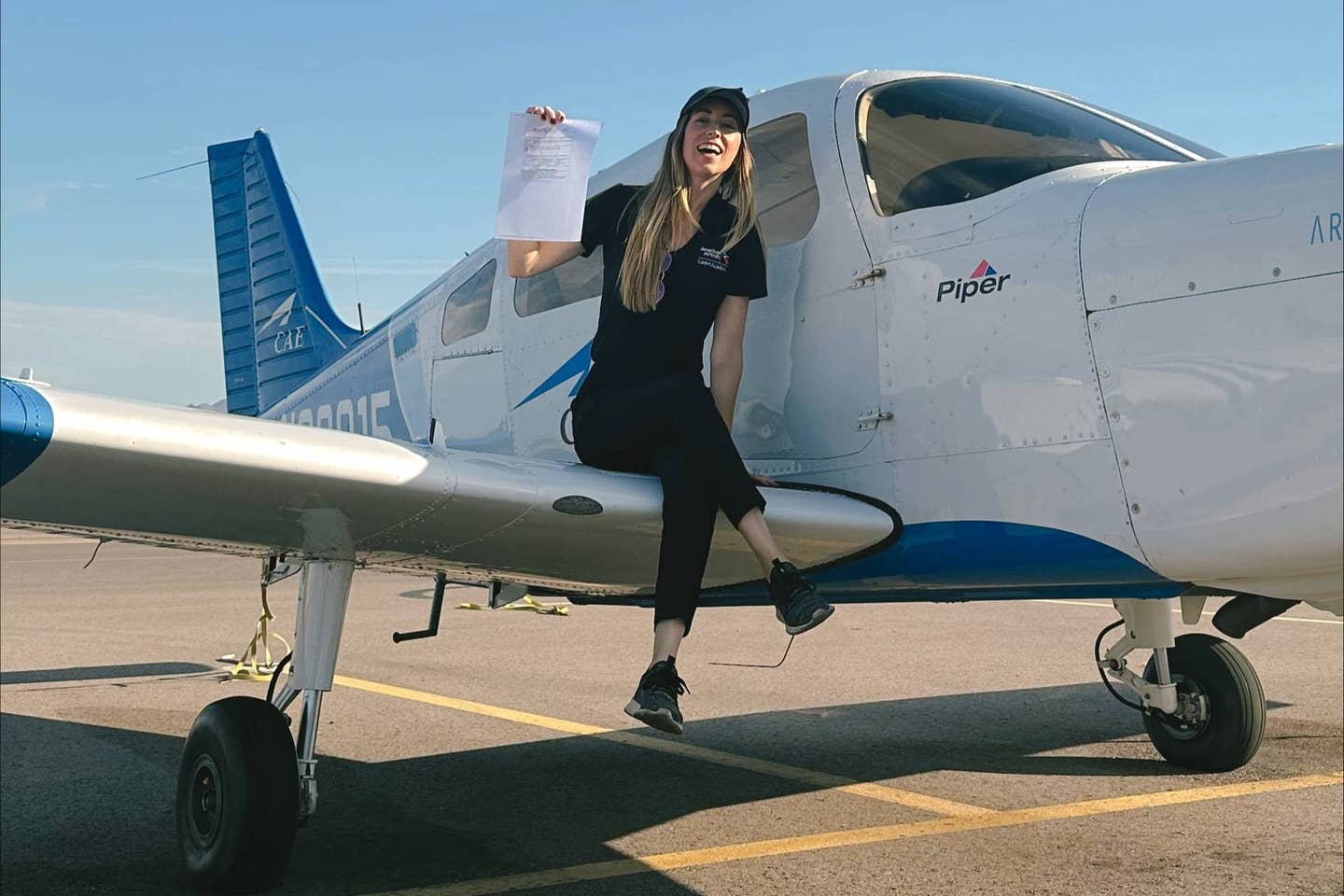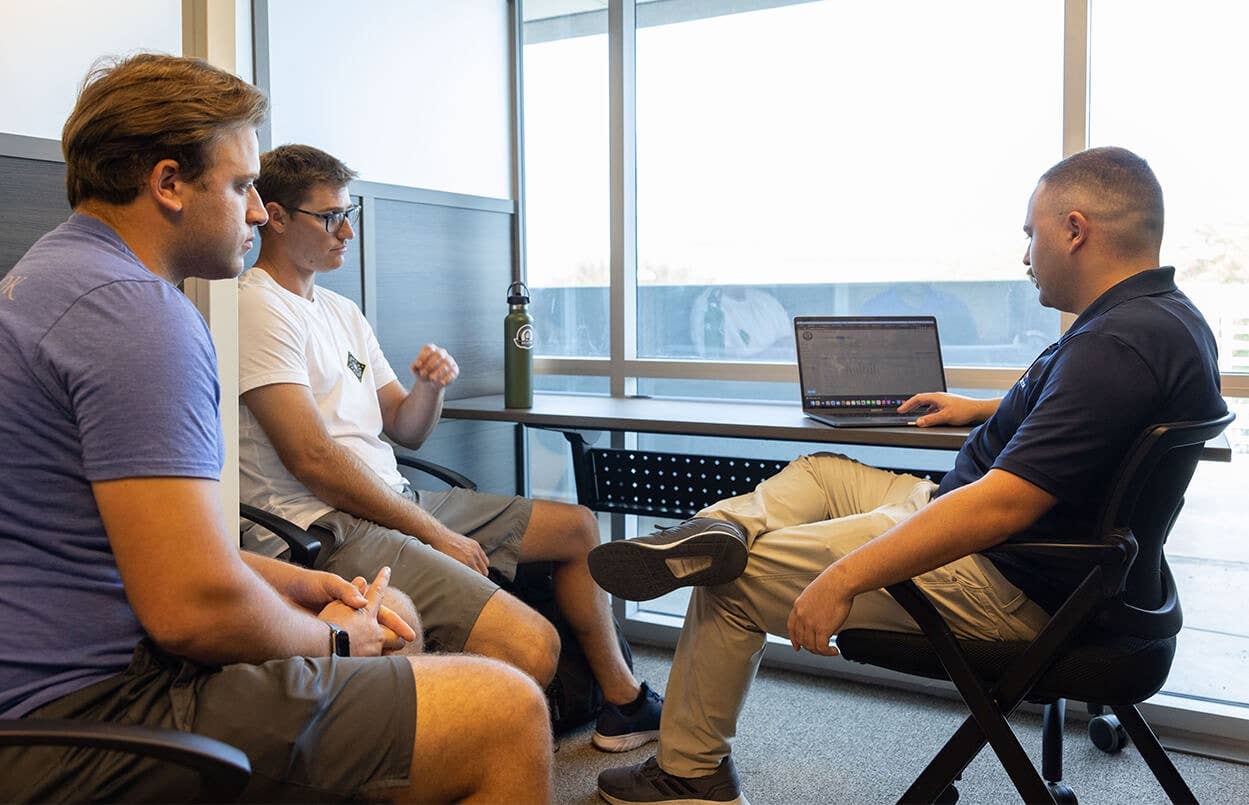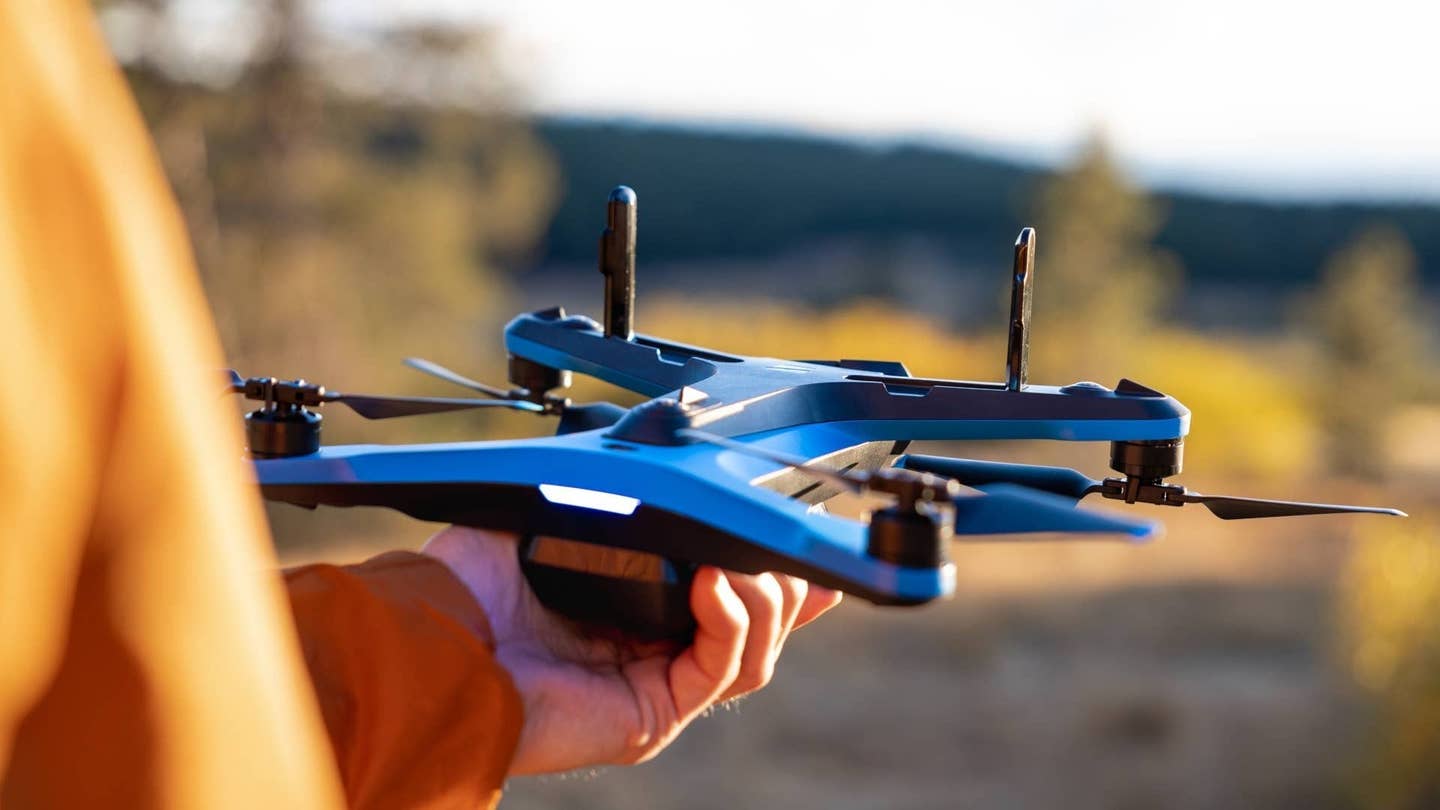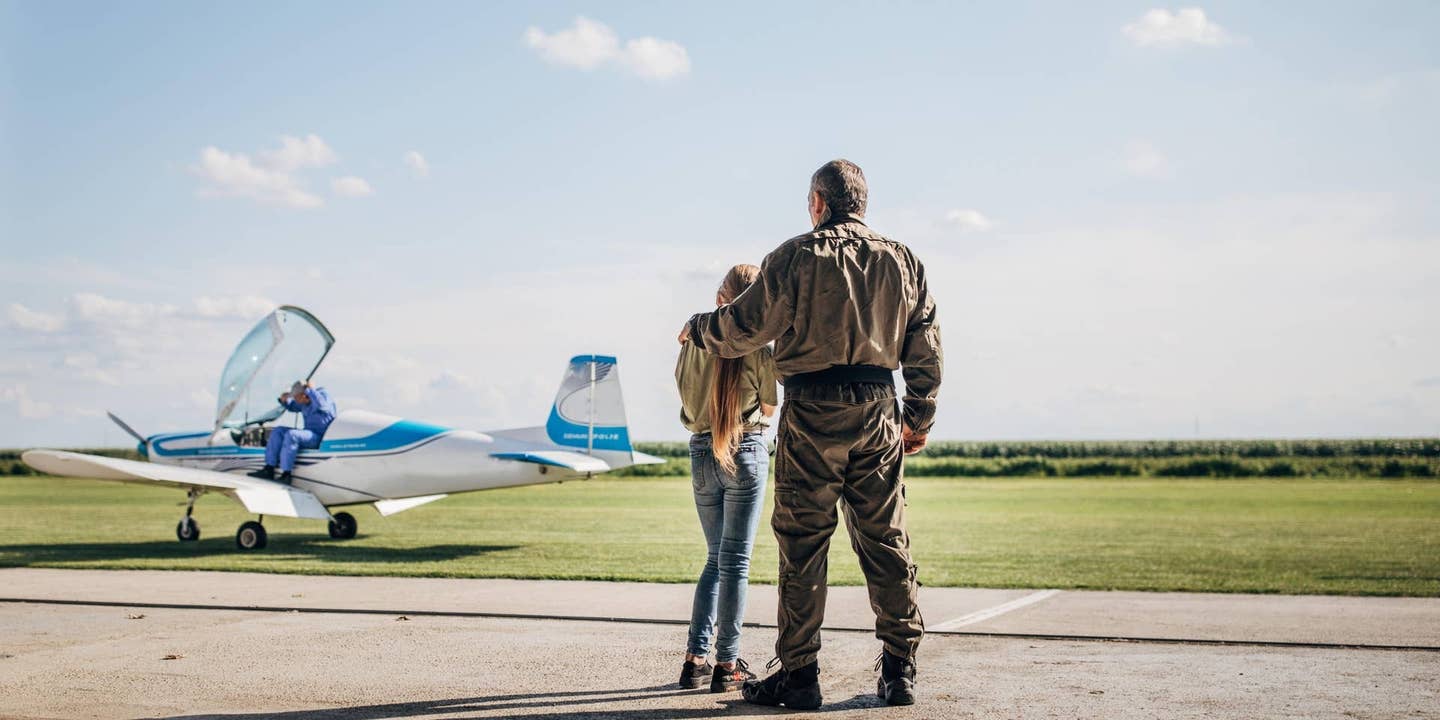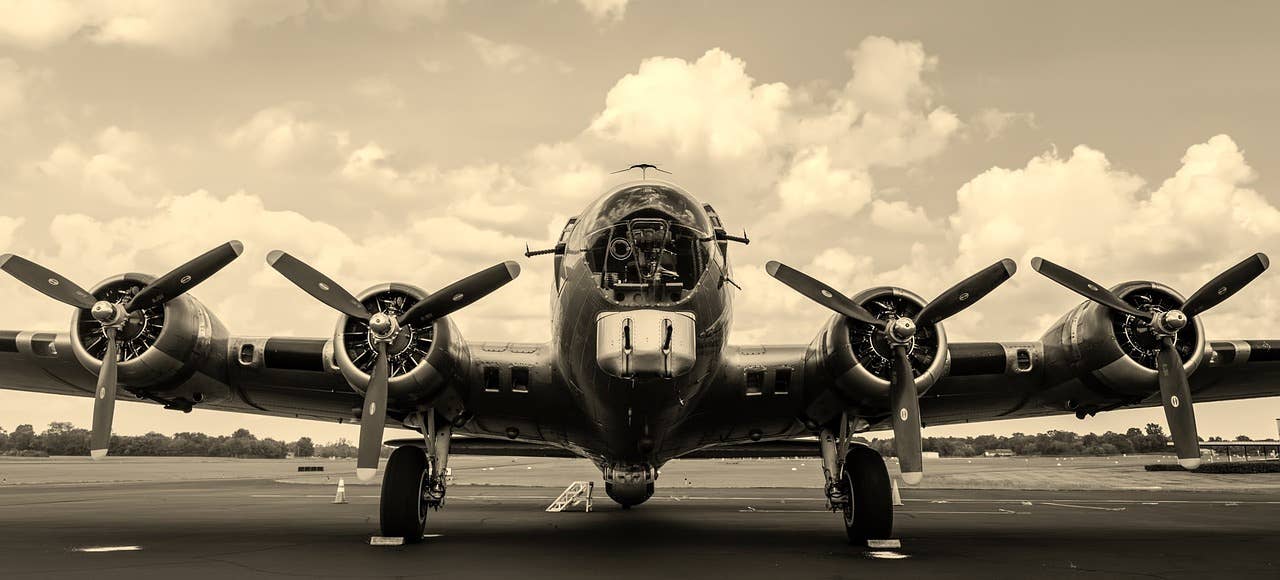
From World War I to the Gulf War and beyond, these books chronicle the history of airplanes and the military. [Pixabay photo]
The history of military aviation has shaped nations, decided battles, and ushered technological leaps in aeronautics and engineering. Stakes are high, technology is pushed to extremes, and courage is a must.
My own interest in military aviation—and in aviation in general, for that matter—can be traced back through my family tree via two of my grandfathers. One piloted C-133 Cargomasters in Vietnam with the U.S. Air Force. He had thrilling stories of close calls, like when he looked an enemy MiG-17 pilot in the eyes from the flight deck and lived to tell the tale. Then there were stories of aerial shenanigans, like the time he snuck the family cat into the cockpit for a ride while stateside.
Before that, though, my great-grandfather served at a base in Terrell, Texas, during World War II, training British fighter pilots. While I never had the chance to meet him, it often occurs to me while working with students on basic pilotage and creating handwritten flight plans that he once taught his students these same lessons. His students, of course, went on to fly Spitfires and Hurricanes against the Luftwaffe and are remembered to this day by visitors to the city's British Flying Training School Museum.
Every military pilot's stories are unique and together make up the pieces of the mosaic that is military aviation history. Thankfully, many of these pilots have written their stories down for us. These volumes offer a window into the human element that drove—and continues to drive— aviation forward, even under the most strenuous circumstances. While many are worth the read, we suggest these good ones:
Winged Victory by V.M. Yeates
Set against the backdrop of World War I's Western Front, this semi-autobiographical novel is widely lauded as one of the most authentic portrayals of aerial combat during the dawn of fighter aviation. The author, Victor Maslin Yeates, served as a pilot in the Royal Air Force, and his intimate familiarity with primitive biplanes, unpredictable weather, and mortal danger drive the narrative.
Rather than glorifying the life of a fighter ace, Yeates shows the crushing fatigue and nagging fear that accompanies every mission, as well as the sudden grief that arrives when a friend fails to return. Readers discover how a short life expectancy shaped camaraderie among pilots, while the book's lyrical style might surprise those expecting a dry military history.
The First and the Last by Adolf Galland
One of Germany's most famous fighter aces, Galland ended up in command of the Luftwaffe's fighter forces during World War II—a position that granted him an insider's view into the evolution (and eventual downfall) of Nazi air power. While the moral implications of fighting for the Third Reich can't be ignored, Galland offers a candid critique of German leadership, the friction between operational demands and political meddling, and the rapid leaps in aircraft technology that characterized the war.
Reach for the Sky by Paul Brickhill
After losing both legs in a crash prior to WWII, Douglas Bader could have retreated into a quiet life on the ground. Instead, he fought to return to active flight duty and eventually became one of the RAF's most celebrated aces, particularly known for his leadership during the Battle of Britain. The biography chronicles Bader's climb from rehabilitation to combat in the skies. Beyond the thrilling narrative, readers are also left with a message about resilience and the refusal to accept limitations.
Samurai! by Saburo Sakai, Martin Caidin, and Fred Saito
The experiences of Japanese fighter pilots tend to go unexplored in Western literature, but Samurai! proves a worthwhile exception. Sakai's accounts of particular dogfights spotlight the skill and daring required to pilot the Mitsubishi A6M Zero, while also revealing the exhausting toll the war took on him and his colleagues. A near-fatal combat wound is a centerpiece of the story, and his harrowing return to base is as much about human will as it is about aviation.
A Higher Call by Adam Makos
In December 1943, a gravely damaged B-17 limped through the skies over Germany. The German fighter pilot who intercepted it could have easily sealed its fate but chose instead to escort the bomber to safety.
READ MORE: 10 Must-Read Books About Space Exploration
Makos' account of this real-life encounter between B-17 pilot Charlie Brown and Luftwaffe ace Franz Stigler is filled with interviews, archival research, and an eye for historical detail.
Fighter Pilot: The Memoirs of Legendary Ace Robin Olds by Robin Olds, Christina Olds, and Ed Rasimus
This memoir, compiled with the help of Robin Olds' daughter Christina and fellow pilot Rasimus, invites readers into cockpits ranging from the P-38 Lightning to the F-4 Phantom II. The stories cover touches of Olds' personality and character, like his insistence on maintaining his famous handlebar mustache, along with accounts of dogfights that required split-second decisions under enormous pressure. Beyond the action, the pages reveal how Olds advocated for the military aviators of his time, wrestling with strategic disagreements and red tape, particularly during Vietnam.
Chickenhawk by Robert Mason
Helicopters changed the face of modern warfare, offering unprecedented mobility in otherwise inaccessible terrain. The Bell UH-1 Huey was an iconic symbol of U.S. involvement in the Vietnam War—and of the peril that came with it. In this firsthand account, Mason takes readers into the claustrophobic cockpit of a Huey as it weaves through tall jungle canopies, ferries troops into landing zones under hostile fire, and executes dangerous medevac missions.
The narrative lays bare the grinding stress that built up after repeated brushes with death and pulls no punches in describing the camaraderie among pilots while dealing with the psychological toll of warfare.
When Thunder Rolled by Ed Rasimus
F-105 Thunderchief pilots in Vietnam often faced one of the war's most dangerous jobs—flying at low altitudes through North Vietnam's increasingly sophisticated air defenses to strike critical targets. Rasimus, a retired U.S. Air Force lieutenant colonel, recounts those early years of the Rolling Thunder bombing campaign. Rasimus deals with how decisions influenced morale while strategy was made thousands of miles away in Washington, D.C., framing success and failure as reliant on pilots' skills as much as it was on the broader political game at play during the war.
Boyd: The Fighter Pilot Who Changed the Art of War by Robert Coram
Nicknamed "Forty-Second Boyd" for his reputed ability to defeat any opponent in under a minute of simulated air combat, John Boyd developed revolutionary tactical theories that influenced everything from fighter design to overall battle planning. In Coram's revealing biography, readers learn about Boyd's OODA Loop (Observe, Orient, Decide, Act), a concept now taught well beyond the Air Force, and discover the internal Pentagon battles he fought to reform the way America designs and deploys its aircraft.
Viper Pilot: A Memoir of Air Combat by Dan Hampton
Hampton's memoir of flying the F-16 "Viper" delivers an unfiltered account of military aviation in the modern age. Hampton, now a retired U.S. Air Force lieutenant colonel, participated in the Gulf War, Kosovo conflict, and war in Iraq. His book goes beyond dogfighting to look at the intricate coordination required in modern warfare between air assets, ground forces, and technology to achieve mission objectives.
Military aviation history is more than just a chronicle of wings and engines. It is the story of human daring, sacrifice, innovation, and sometimes even compassion in the midst of what might otherwise be best described as chaos. Written accounts offer stirring heroism and surprising acts of mercy. Others cast a stark light on the bureaucratic and strategic blind spots that shape wars both past and present.
They give voices to the people who risked everything to take the controls through some of recent history's darkest hours.
I'd encourage you to give them a read.

Sign-up for newsletters & special offers!
Get the latest FLYING stories & special offers delivered directly to your inbox


